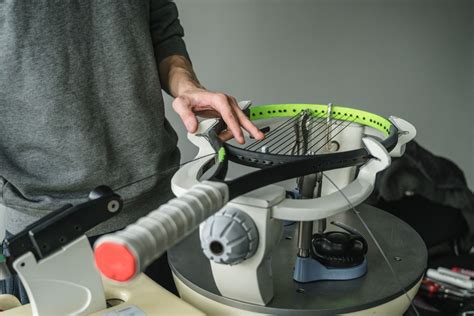The Price of Power: Tennis Racket Restringing Costs
Getting your tennis racket restrung is a crucial part of maintaining optimal performance on the court. But how much does it actually cost, and what factors influence the price? This comprehensive guide breaks down the cost of restringing, exploring various factors and helping you make informed decisions about your equipment maintenance.
What Factors Influence Tennis Racket Restringing Costs?
Several key factors contribute to the final price you'll pay for a restringing service:
1. Type of String:
This is arguably the biggest factor. Strings vary significantly in price, quality, and playing characteristics.
- Synthetic Gut: This is the most common type, offering a good balance of power, control, and durability at a relatively affordable price. Expect a moderate cost increase depending on the brand and specific type.
- Natural Gut: Known for its exceptional feel, comfort, and power, natural gut strings are considerably more expensive than synthetics. They offer superior playability but require more frequent restringing.
- Multifilament: These strings are softer and more comfortable than synthetics, often providing good power and control. Their price falls between synthetic gut and natural gut.
- Hybrid Stringing: This option combines two different types of strings, often a synthetic gut in the mains and a softer material in the crosses. This allows customization of feel and playability, but will influence the overall price.
2. String Tension:
The tension at which your strings are strung directly impacts your game. Higher tension generally provides more control and a crisper feel, but can lead to a harsher hitting experience and potentially reduced durability. Lower tension offers more power and comfort but may compromise control. While some shops offer tensioning as part of their standard service, significant deviations from the average tension range may incur additional fees.
3. Racket Type and Size:
The size and type of your racket can influence restringing time and therefore cost. Larger-headed rackets generally require more string and may take slightly longer to restring than smaller-headed ones. Unique frame designs or difficult-to-access grommets might also increase labor costs.
4. Location and Restringer Expertise:
Prices vary considerably depending on your location and the shop you choose. Larger cities or areas with high concentrations of tennis players might have higher prices than smaller towns. Highly experienced restringers who specialize in high-performance rackets may charge a premium for their expertise.
5. Service Level:
Some shops offer basic restringing services, while others provide more comprehensive options, such as knot tying techniques, specific tension recommendations based on your playing style, and racket maintenance advice. These additional services typically result in higher prices.
How Much Does Tennis Racket Restringing Typically Cost?
The average cost for restringing a tennis racket in the US can range from $20 to $80 or more. The lower end of this spectrum typically involves a basic restring with synthetic gut at a standard tension. Prices increase substantially with natural gut strings or specialized services. For high-end setups with natural gut and custom tensioning from a reputable stringer, expect to pay on the higher end of this range, and even more in some areas.
What are the Different Types of Tennis Strings?
This question has already been partially answered above in the section discussing the factors influencing restringing costs. The different types of strings—synthetic gut, natural gut, multifilament, and hybrid—all possess unique characteristics affecting playability, durability, and, significantly, price.
How Often Should I Get My Tennis Racket Restrung?
The frequency of restringing depends on various factors including your playing style, string type, and string tension. Aggressive players often need more frequent restringing than casual players. Generally, it's recommended to have your racket restrung every 6-8 weeks of regular play, or when you notice a significant loss of power, control, or a change in the feel of the racket.
Can I Restring My Tennis Racket Myself?
While you can attempt to restring your racket at home, it's a complex and challenging process requiring specialized tools and significant expertise. Improper restringing can damage your racket and even cause injury. Unless you have extensive experience, it's strongly recommended that you leave restringing to a professional.
Conclusion:
The cost of restringing your tennis racket is an investment in your game. By understanding the factors that influence the price, you can make informed decisions that balance performance, durability, and your budget. Prioritizing a professional restringing service ensures your racket remains in optimal condition, helping you play your best tennis.

